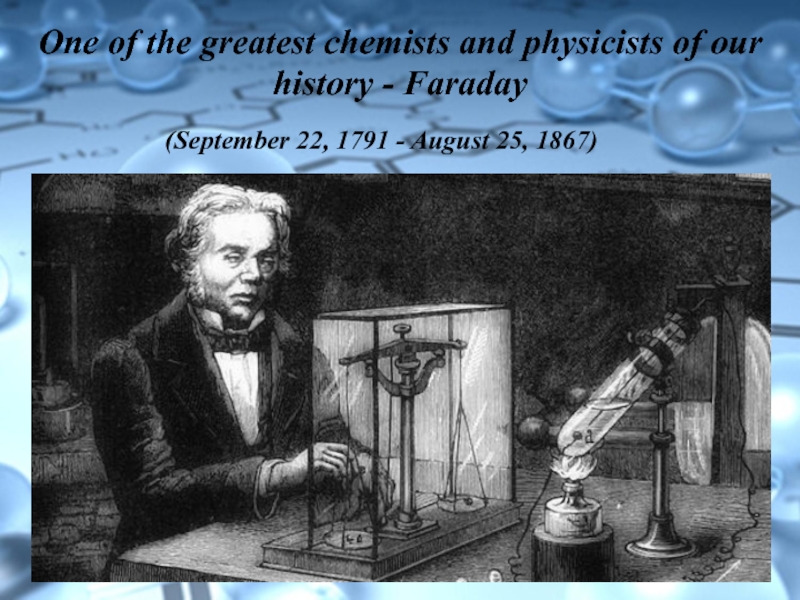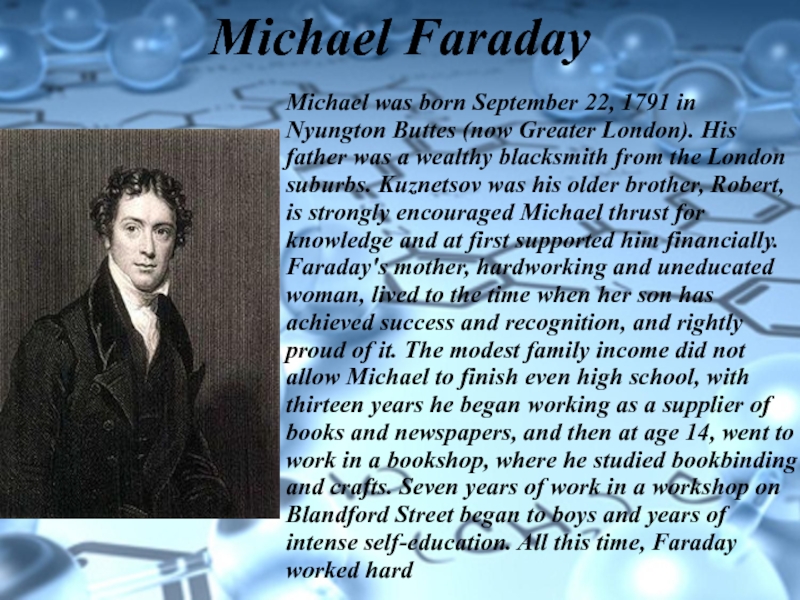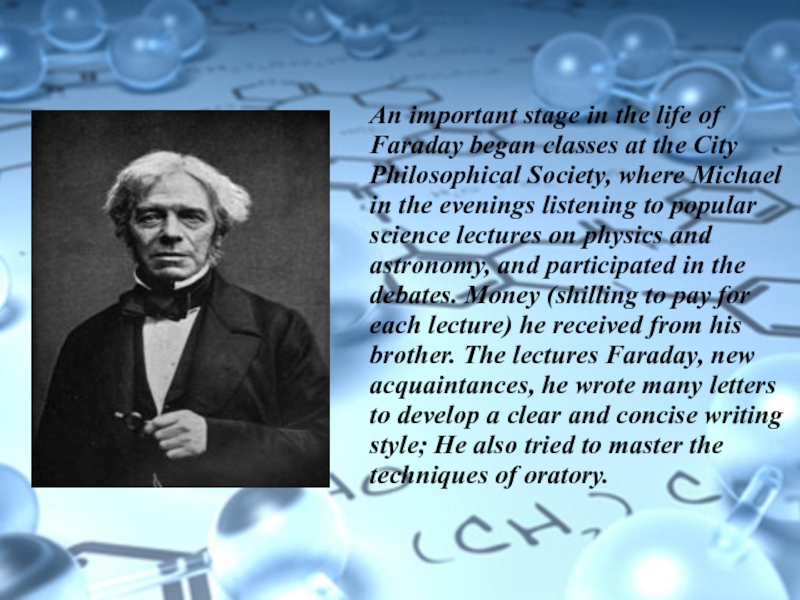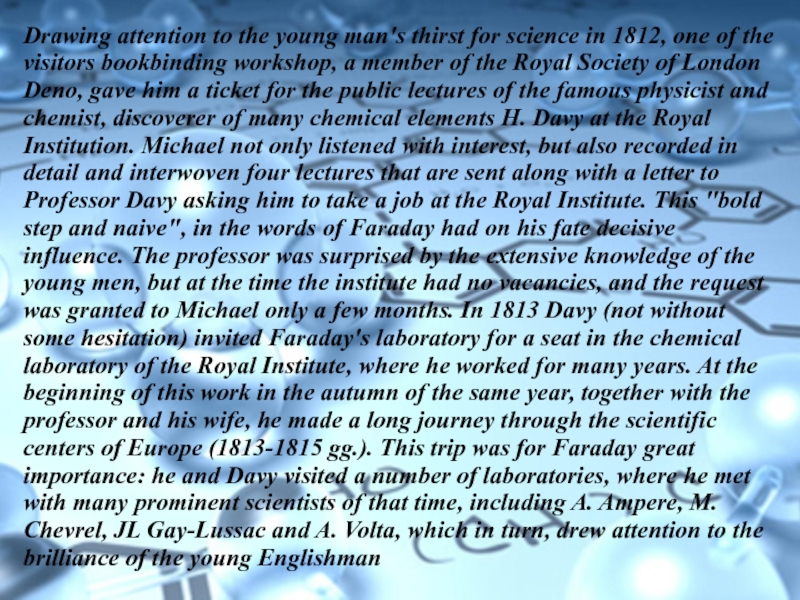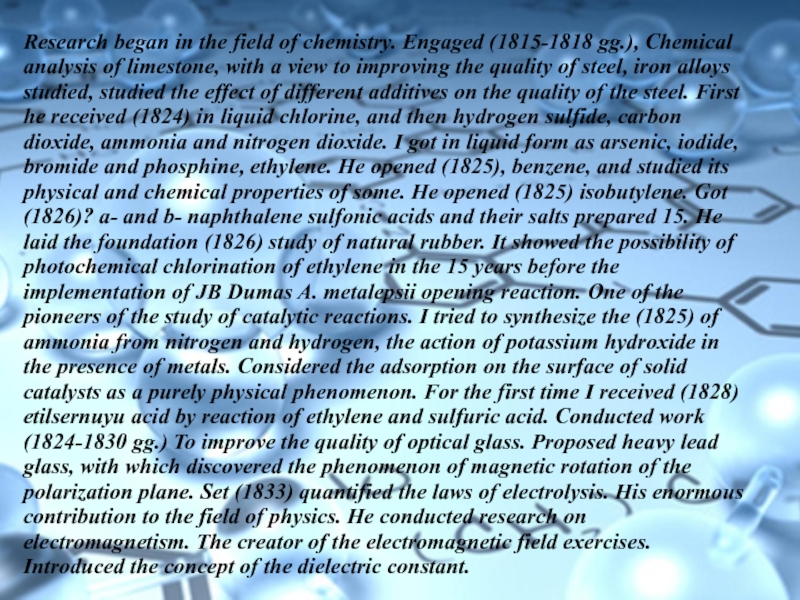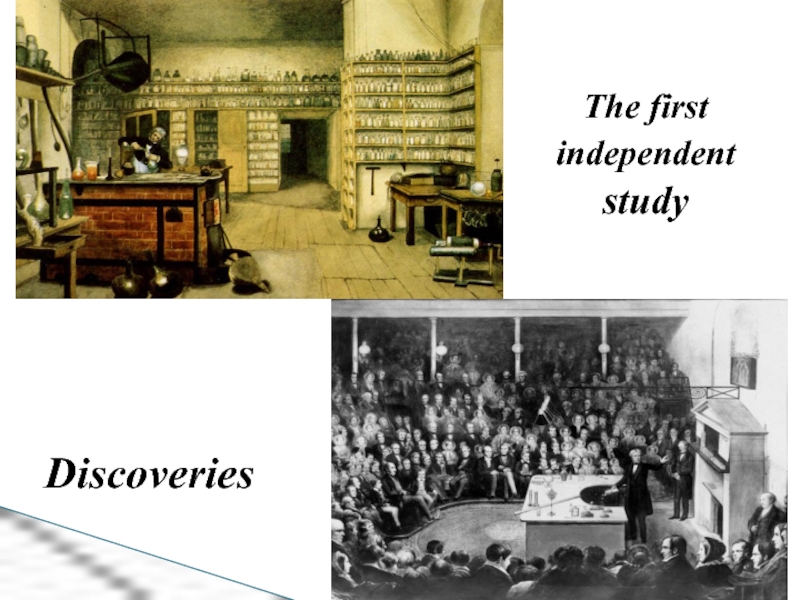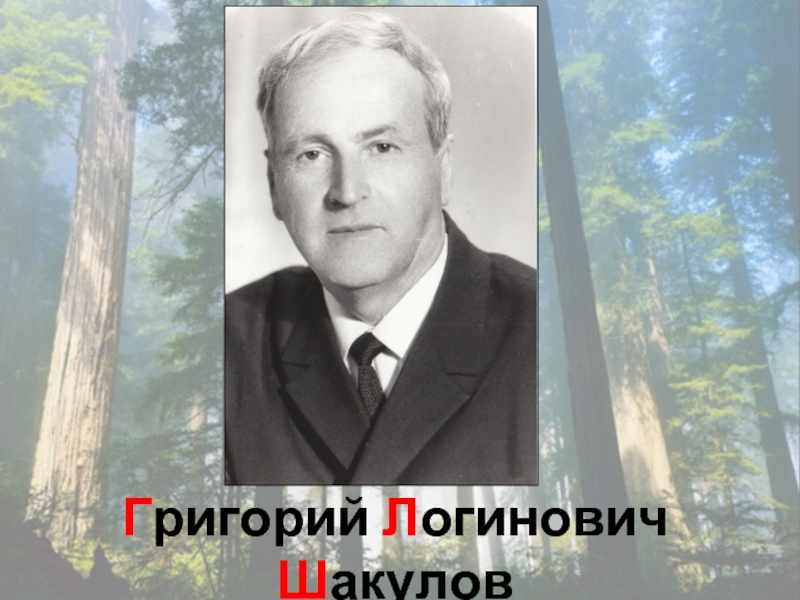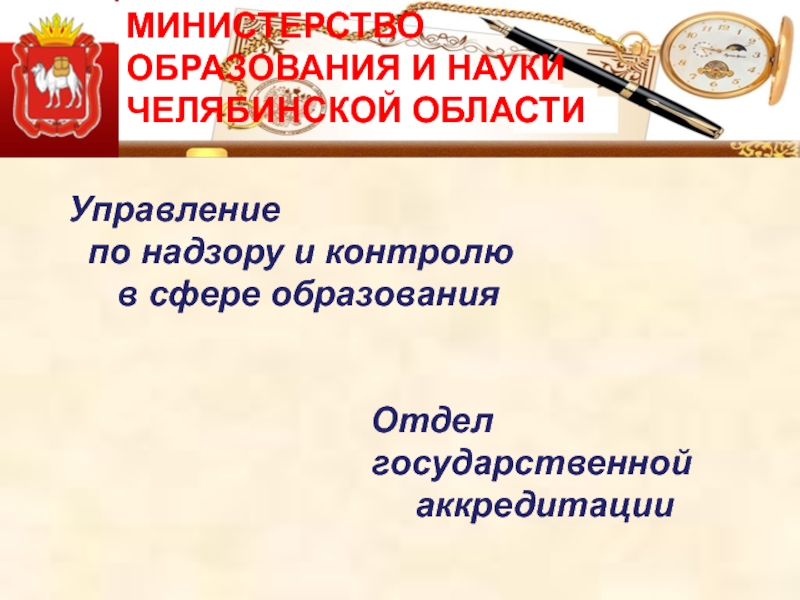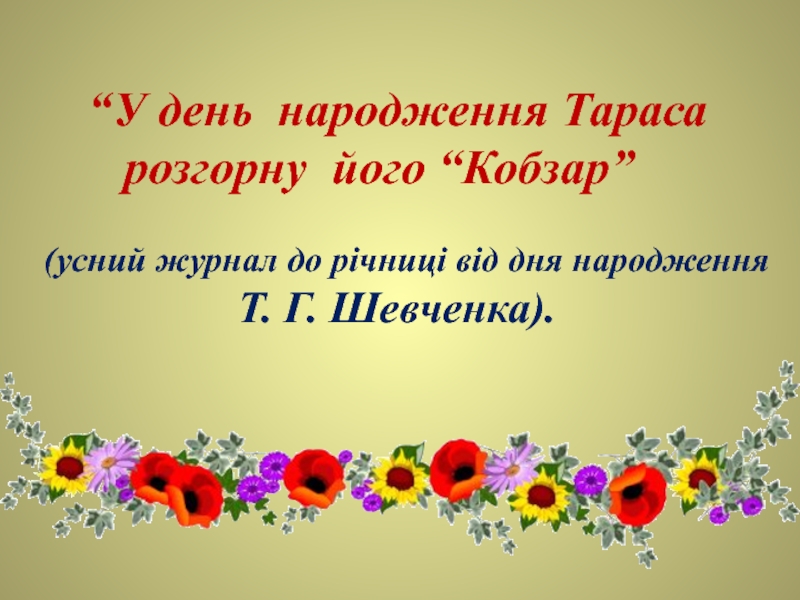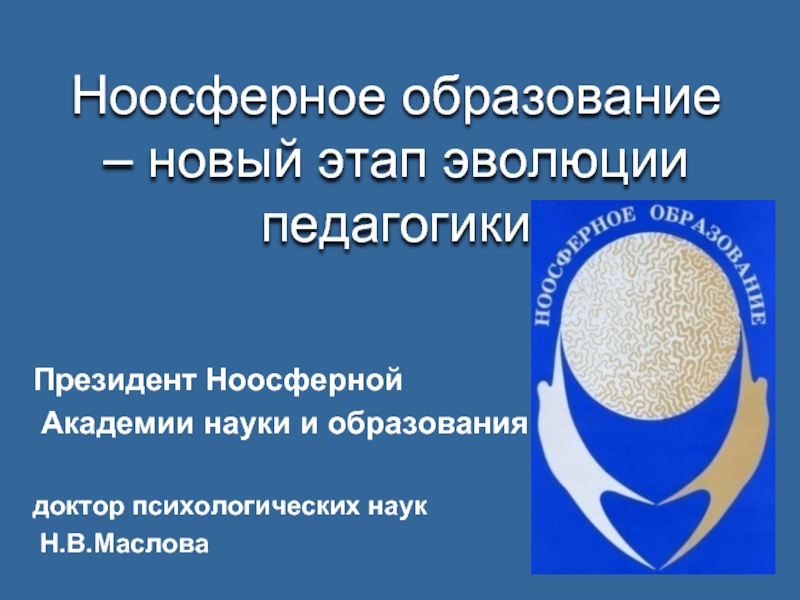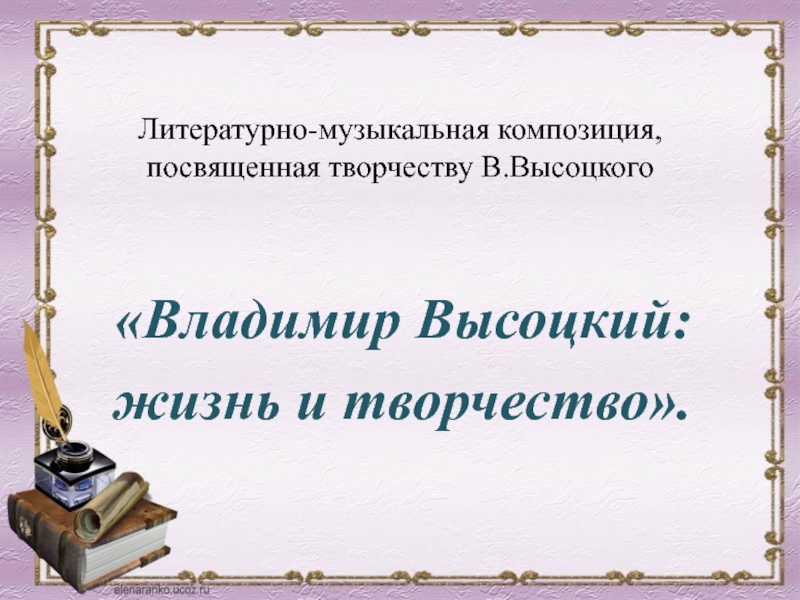(September 22, 1791 - August 25, 1867)
- Главная
- Разное
- Дизайн
- Бизнес и предпринимательство
- Аналитика
- Образование
- Развлечения
- Красота и здоровье
- Финансы
- Государство
- Путешествия
- Спорт
- Недвижимость
- Армия
- Графика
- Культурология
- Еда и кулинария
- Лингвистика
- Английский язык
- Астрономия
- Алгебра
- Биология
- География
- Детские презентации
- Информатика
- История
- Литература
- Маркетинг
- Математика
- Медицина
- Менеджмент
- Музыка
- МХК
- Немецкий язык
- ОБЖ
- Обществознание
- Окружающий мир
- Педагогика
- Русский язык
- Технология
- Физика
- Философия
- Химия
- Шаблоны, картинки для презентаций
- Экология
- Экономика
- Юриспруденция
One of the greatest chemists and physicists of our history - Faraday презентация
Содержание
Слайд 1One of the greatest chemists and physicists of our history -
Faraday
Слайд 2Michael Faraday
Michael was born September 22, 1791 in Nyungton Buttes (now
Greater London). His father was a wealthy blacksmith from the London suburbs. Kuznetsov was his older brother, Robert, is strongly encouraged Michael thrust for knowledge and at first supported him financially. Faraday's mother, hardworking and uneducated woman, lived to the time when her son has achieved success and recognition, and rightly proud of it. The modest family income did not allow Michael to finish even high school, with thirteen years he began working as a supplier of books and newspapers, and then at age 14, went to work in a bookshop, where he studied bookbinding and crafts. Seven years of work in a workshop on Blandford Street began to boys and years of intense self-education. All this time, Faraday worked hard
Слайд 3An important stage in the life of Faraday began classes at
the City Philosophical Society, where Michael in the evenings listening to popular science lectures on physics and astronomy, and participated in the debates. Money (shilling to pay for each lecture) he received from his brother. The lectures Faraday, new acquaintances, he wrote many letters to develop a clear and concise writing style; He also tried to master the techniques of oratory.
Слайд 4Drawing attention to the young man's thirst for science in 1812,
one of the visitors bookbinding workshop, a member of the Royal Society of London Deno, gave him a ticket for the public lectures of the famous physicist and chemist, discoverer of many chemical elements H. Davy at the Royal Institution. Michael not only listened with interest, but also recorded in detail and interwoven four lectures that are sent along with a letter to Professor Davy asking him to take a job at the Royal Institute. This "bold step and naive", in the words of Faraday had on his fate decisive influence. The professor was surprised by the extensive knowledge of the young men, but at the time the institute had no vacancies, and the request was granted to Michael only a few months. In 1813 Davy (not without some hesitation) invited Faraday's laboratory for a seat in the chemical laboratory of the Royal Institute, where he worked for many years. At the beginning of this work in the autumn of the same year, together with the professor and his wife, he made a long journey through the scientific centers of Europe (1813-1815 gg.). This trip was for Faraday great importance: he and Davy visited a number of laboratories, where he met with many prominent scientists of that time, including A. Ampere, M. Chevrel, JL Gay-Lussac and A. Volta, which in turn, drew attention to the brilliance of the young Englishman
Слайд 5Research began in the field of chemistry. Engaged (1815-1818 gg.), Chemical
analysis of limestone, with a view to improving the quality of steel, iron alloys studied, studied the effect of different additives on the quality of the steel. First he received (1824) in liquid chlorine, and then hydrogen sulfide, carbon dioxide, ammonia and nitrogen dioxide. I got in liquid form as arsenic, iodide, bromide and phosphine, ethylene. He opened (1825), benzene, and studied its physical and chemical properties of some. He opened (1825) isobutylene. Got (1826)? a- and b- naphthalene sulfonic acids and their salts prepared 15. He laid the foundation (1826) study of natural rubber. It showed the possibility of photochemical chlorination of ethylene in the 15 years before the implementation of JB Dumas A. metalepsii opening reaction. One of the pioneers of the study of catalytic reactions. I tried to synthesize the (1825) of ammonia from nitrogen and hydrogen, the action of potassium hydroxide in the presence of metals. Considered the adsorption on the surface of solid catalysts as a purely physical phenomenon. For the first time I received (1828) etilsernuyu acid by reaction of ethylene and sulfuric acid. Conducted work (1824-1830 gg.) To improve the quality of optical glass. Proposed heavy lead glass, with which discovered the phenomenon of magnetic rotation of the polarization plane. Set (1833) quantified the laws of electrolysis. His enormous contribution to the field of physics. He conducted research on electromagnetism. The creator of the electromagnetic field exercises. Introduced the concept of the dielectric constant.
